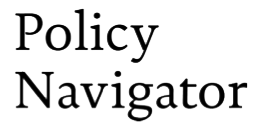- Share on LinkedIn
- Share on Bluesky
- Share on X
- Share by email
-
Link
Copy link
Griffiths report on management in the NHS
NHS Management Inquiry
In February 1983, the government asked Roy Griffiths, a Director of J Sainsbury's plc, to lead an inquiry into the effective use and management of manpower and resources.
The report was delivered in October 1983. Griffiths made a number of recommendations which led to the introduction of general management in the NHS.
The review found that there was no clear definition of management functions in the NHS. Griffiths stated that:
'At no level is the general management role clearly being performed by an identifiable individual. In short, if Florence Nightingale were carrying her lamp through the corridors of the NHS today she would almost certainly be searching for the people in charge.'
The inquiry team also felt that clinicians could be more closely involved in making decisions about priorities in the use of resources.
Recommendations for the introduction of general management
The review recommended that the government should establish a Health Services Supervisory Board (HSSB), chaired by the Secretary of State for Health to decide on:
- objectives
- budgets
- strategies for the NHS.
To strengthen management capability, Griffiths recommended that all regional and district health authorities should appoint general managers to take charge of services at regional and district management levels from April 1984, and the same principles should be applied to the Department of Health.
One of the recommendations made was around establishing an NHS Management Board (NHSMB). Griffiths intended that the NHSMB would be multi-professional, drawing members from:
- private sector
- NHS
- civil service.
Griffiths suggested its role was to implement policy from the HSSB, provide leadership to the management of the NHS and effectively performance manage the NHS. Until then, the dogma had been 'consensus management'. General management would manage conflict and set objectives.
Impact and later developments
The government accepted the recommendations. The HSSB was established in October 1983 and met regularly until the end of 1985 but then only met intermittently from 1986–88 as its significance within the department dwindled and it became purely advisory (rather than overseeing the NHS Management Board). Kenneth Clarke made the decision to wind up the board in 1989.
The Department of Health and Social Security established an NHS Management Board in April 1985. The first chair of the board was Victor Paige, from April 1985. Following his resignation, 16 months later, Len Peach replaced him and was given the new title of Chief Executive of the NHS Management Board.
Major shifts of power occurred following the introduction of general management. The Griffiths report put an end to consensus management and raised the power (and salary) of the general manager while reducing the power of other groups. Opposition came from those groups that would lose power, such as public health doctors and nursing managers.
Griffiths ER.
NHS Management Inquiry: Griffiths Report on NHS October 1983.
SHA; 1983.
House of Commons.
NHS Management Board: Chairman's Resignation.
HL Deb 04 June 1986 vol 475 cc1013-9.
Hansard; 1986.
Sheard S, Donaldson L.
The Nation's Doctor: The Role of the Chief Medical Officer 1855-1998.
Radcliffe Publishing; 2006.
Edwards B, Fall M.
The executive years of the NHS: the England account 1985-2003.
The Nuffield Trust; 2005.
Leathard A.
Health Care Provision: Past, present and into the 21st century.
2nd edn.
Nelson Thornes; 2001.

